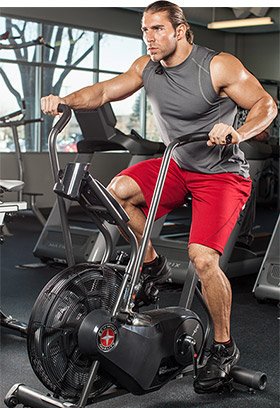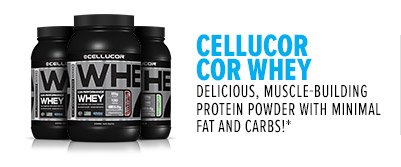When you're serious about getting lean and fit, you do cardio. If you've been paying attention to the best ways to speed up fat loss and make fitness gains in less time, you probably alternate bouts of high-intensity cardio with short recovery periods.
This is known as high-intensity interval training (HIIT). For those of you interested in taking things even further, consider trying a specific HIIT protocol called Tabata.
Tabata maximizes anaerobic and aerobic capacity in a hardcore workout that takes mere minutes. It's a heart-pounding session in which you push yourself all-out for 20 seconds followed by 10 seconds of rest, for 4 minutes total.
With only 4 minutes of serious work, can Tabata really be the Holy Grail for individuals looking to see more results in less time? Let's take a deeper look at the protocol and how you can harness its benefits.
4-Minute Miracle?

Tabata is a system that's taken off in popularity based on research completed by Japanese researcher Izumi Tabata, PhD, MD, in the mid-1990s. He studied Olympic speed skaters and found that 20 seconds of super-intense exercise on a Spin-type bike followed by 10 seconds of rest, repeated continuously for 4 minutes total, led to great gains in aerobic and anaerobic fitness without any loss in muscle mass.
Compared to steady-state cardio, Tabata was a hands-down winner, though its effects on fat loss weren't proven in the original research, and its effect on building endurance and stamina were negligible.
With warm-up and cool-down, the original protocol is a grand total of 16 minutes. For anyone with an overwhelming distaste for doing cardio, Tabata is a proven way to get your cardio out of the way in a hurry, but don't confuse brevity with ease.
With lactic acid building up and your lungs screaming for air, the four-minute program will tax you like few other cardio programs can.
HIIT for Fit
To be sure, HIIT cardio and circuits are loosely based on the same principle of alternating high- and low-intensity bouts of training, but only the Tabata protocol has the benefits shown in the study. Still, longer sessions of HIIT have one important advantage over Tabata: significantly increasing the amount of oxygen consumed post-exercise for up to 24 hours.
While this may seem to be a minor point, high-intensity intervals significantly boost the total number of calories burned because post-exercise resting metabolism is elevated—unlike with steady-state cardio—for up to 24 hours afterward.
Tabata training (and HIIT) both share one great advantage for guys looking to hold onto muscle mass: Unlike traditional steady-state cardio, high-intensity intervals help you build and maintain muscle mass because the fast-twitch fibers—the ones most prone to growth,—are best targeted by this type of training.



Tabata for Cardio
Tabata's application to cardio is pretty straightforward:
-
Do a 10-minute steady-state warm-up.
-
Go all-out for 20 seconds, followed by a 10-second rest.
-
Repeat the 20/10 ratio a total of eight times (4 minutes total).
-
Finish with a 2-minute cool-down.

Freehand Jump Squats
-
Follow the program 3-5 times per week.
-
Choose cardio equipment that adjusts resistance quickly.
-
Because your body becomes more efficient over time on a single piece of equipment, rotate the equipment you choose frequently to continue burning max calories.
-
For great fat-loss results, do Tabata after your weight workout when your body is already in a carb-depleted state.
-
Beginners may start off a bit slower rather than going all-out and doing the full 8 cycles.
Adapting the Principle to Your Weight Workouts
I'm about to commit a sin that's going to have every Tabata disciple firing off a letter in protest: adapting the principle in a way it wasn't designed. I know this is a minimum 15-yard penalty, but Tabata-inspired finishing moves can be a great way to blast a body part at the end of a workout.
Besides taxing the cardiorespiratory system, the muscle pump from doing an exercise Tabata-style is super-intense. That's important because engorging the muscle with fluids not only brings in nutrients while stretching the muscle fascia, but the intensity has been shown to temporarily boost growth-hormone levels, and GH is both anabolic and lipolytic (fat burning).

If you're looking to add a Tabata-inspired finishing move to the end of your body-part weight routine, here are a few tips:
-
Choose a multi-joint exercise that recruits a larger degree of muscle mass over a single-joint move.
-
Avoid exercises that are more difficult to get into the start position. Here, a Smith machine overhead press is better that a dumbbell overhead press.
-
Since you're pushing yourself to the limit, a machine move may be a better option than a free-weight move to ensure you can maintain form, especially as you fatigue toward the end of the set. Good options would be machine presses for chest, machine rows for back, and Smith machine squats or leg presses for legs.
-
Push yourself hard and fast, but keep your reps clean. Choose a weight at which you can do 12-15 reps with good form, but do them only for time, not reps.
-
Invest in a stopwatch or download a timer to ensure your intervals are consistent. It's hard to keep track of time when you're pushing yourself to your limit.
-
Full-body exercises are better candidates for approximating Tabata's all-out intensity. These can be done as bodyweight or even kettlebell moves distinct from your weight workout.
Whether you do an actual Tabata cardio workout or one inspired by the rest-pause protocol, prepare to push yourself and don't be afraid to experiment. You'll continue making progress and keep boredom at bay.

Recommended For You

Why You Need Whey
Did you ever see a study that seemed to contradict common sense when it comes to the basics of exercise and supplementation? You're not the only one.
Can You Build Muscle On A Ketogenic Diet?
You know protein is essential for muscle growth, but carbs play an important role too. Here's what you need to know.
